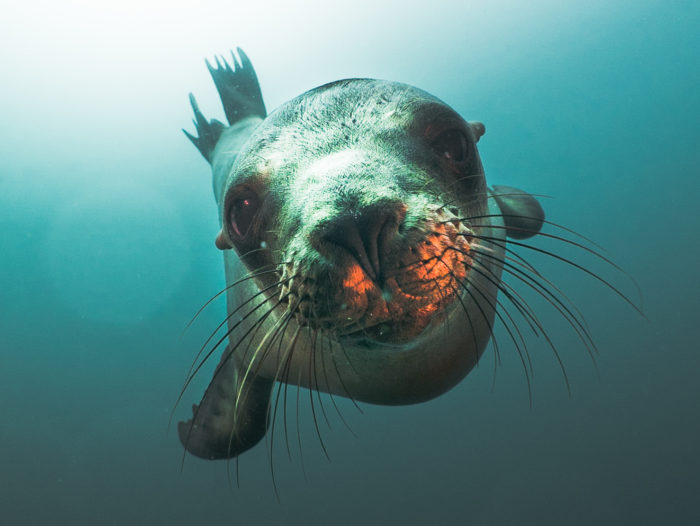There is something special about sipping a coffee as the sun rises over the calm Sea of Cortez. Combine that with a pod of playful dolphins joining us at the bow, sides and stern of the boat as we rub our sleepy eyes, I doubt there are better ways to wake up.
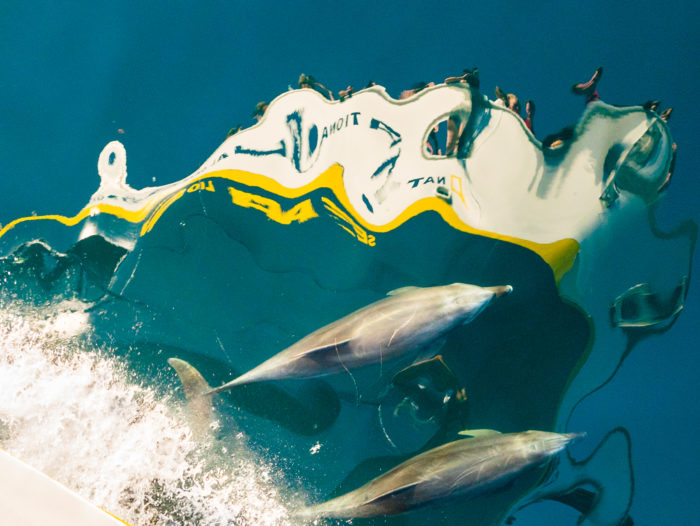
Mel, the 2017 Australasian Scholar, and I were spoilt during our Lindblad Expedition, off Baja California and in the Sea Of Cortez. Most mornings we woke up to dolphins and were torn to either go and have breakfast or stay watching them glide along with the bow wave of our boat, One memorable morning, Jim – our expedition leader announced over the boat tannoy;
“Good morning aboard the Sea Lion folks. It’s another beautiful day here in Baja California, and if you’d like to join us at the bow, we have a pod of Orca.”
You know you’re having a good morning when you can’t decide where to look with Orcas on one side, Humpbacks on the other and a Pygmy Sperm Whale at the front. What a hard decision to make! However, the decision was made and we ate our breakfast with those beautiful black and white orcas popping in and out of our view through the dining room window.
Not to worry, as we approached the towering rocks of Land’s end, south from San Jose del Cabo, entering the Pacific Ocean, we were watched the sun set with a humpback mother and calf breaching out of the water simultaneously. It was almost as if the mother was teaching her baby how to breach. The calf leaped and leaped again, at least twenty times and I feel blessed to have seen a baby humpback learning how to be a magnificent whale! I don’t think a day could be filled with any more marine mammals, there’s no question why this beautiful part of the sea is renowned for seeing fantastic mega fauna.
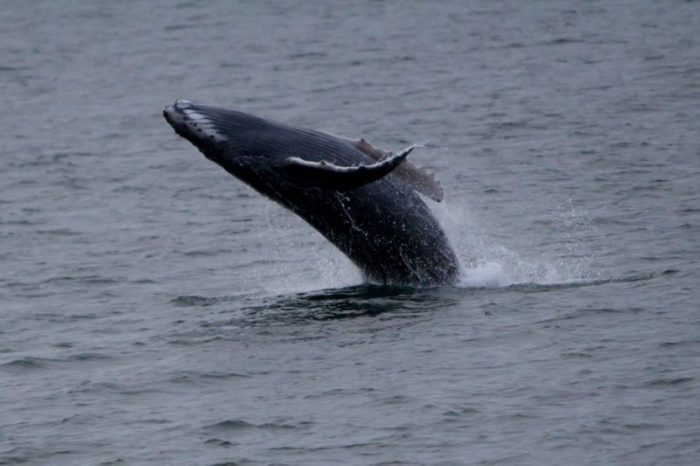
The highlight of the trip was the reason for our expedition around the Baja Peninsula. As we pulled into Magdalena Bay an estuary surrounded by bleached sand dunes and low-lying mangroves, you could see that this was a perfect hideaway. A protected nursery for a gentle giant, the Grey Whale. The mothers give birth in this sanctuary and prepare themselves and child to travel back up the east coast of the Americas. Before we had even anchored there were Whales everywhere. We could see their spouts shooting up in all directions of view. And as you lay in bed at night you could still here them taking their big exhales just outside of your cabin.
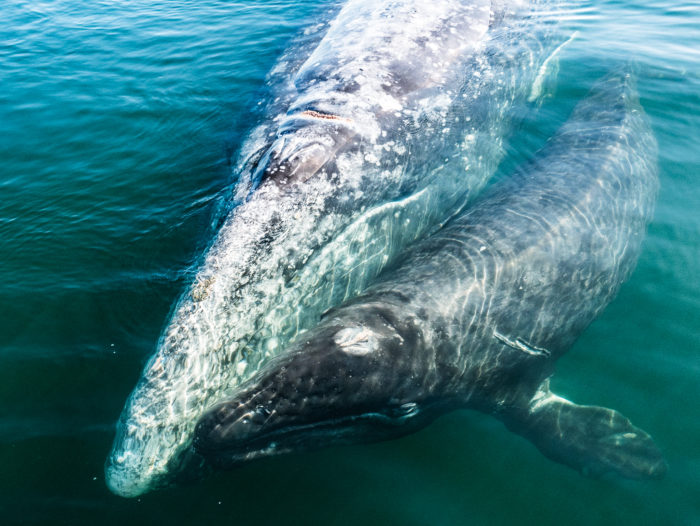
But it doesn’t stop there. The grey whales of Baja California are famous for a very unusual behaviour. They approach the boats in the lagoon and let people touch their noses and sometimes even scratch their tongue! No one really knows why they allow this. But for a long period, after they were heavily whaled, they turned aggressive to boats. Rightly so when almost whaled to extinction. However, for some reason they have forgiven us. Forgiven our species and once again reach out to us for attention and interaction. It was a privilege.
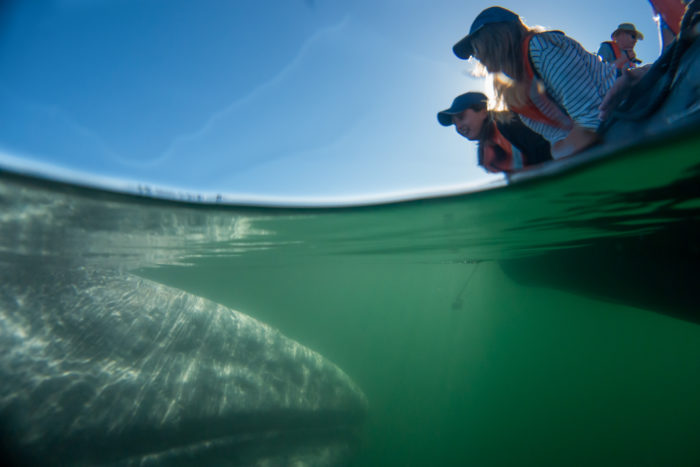
There was one whale who is now infamous in the lagoon. Olivia. All the pangeros, Mexican boat drivers, would spot Olivia and knew her well. She would just lie at the top of the water, like a giant log as boats took it in turn to drive over to her. She wouldn’t even move, only to push her baby more towards our out stretched hands to rub their noses. Why would such a creature tolerate so many of us patting her and her baby, I have no idea. But I am so humbled and thankful that they do. A giant of the ocean willingly breaching the interface of our terrestrially world.
There is no doubt that this National Geographic Lindblad expedition is one of the highlights of my year. We were spoilt with marine life from day one to disembarking the boat. The staff made up of National Geographic photographers, videographers, naturalists and undersea specialists fleshed out the experience even more with sharing their knowledge of their field and of this environment they’ve become to know so well. The crew were also brilliant at making us feel right at home, and neither Mel nor I wanted to leave.
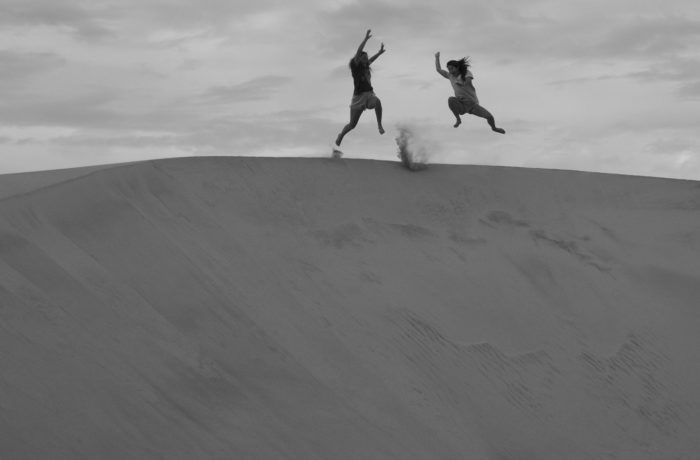
Being able to attend this trip with my fellow scholar sister was especially special. Mel’s ambition is to study marine mammals and try to decipher their behaviour. Additionally she has wanted to see the grey whales for years! It was a pleasure to share this incredible experience with her and see how the Our World Underwater Scholarship Society, Rolex and National Geographic Lindblad Expeditions, enables us scholars to experience things we have only ever dreamed about. Myself and Mel also quickly became known as the alarm clocks on the boat as we would wake up most of the other guests by our excitement because of the dolphins and whales!
